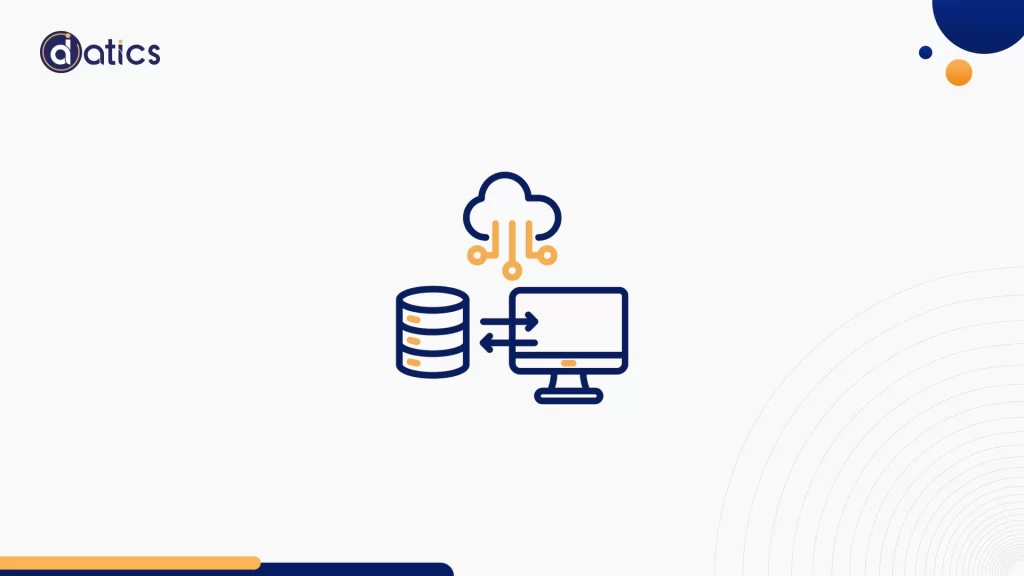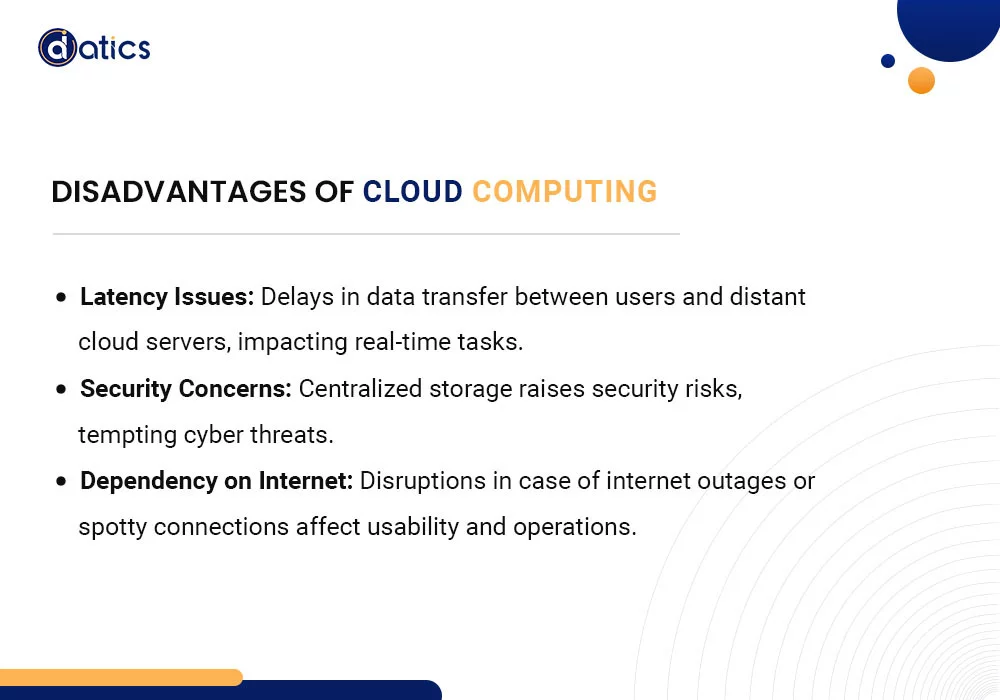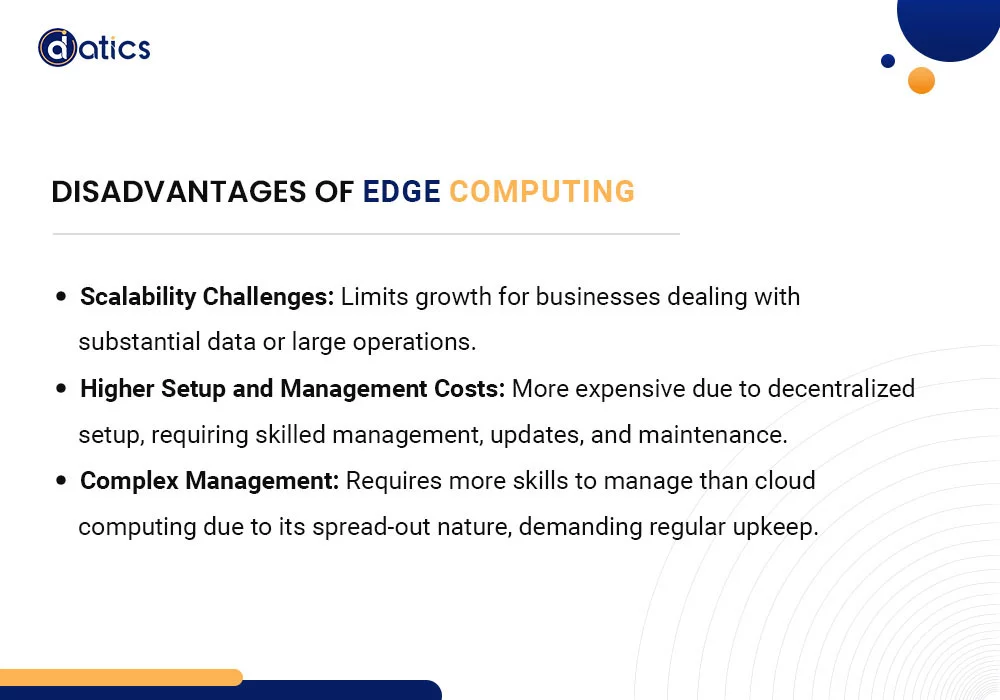
© 2024 | All Right Revered.
Explore the differences between edge and cloud computing to understand their impact on the future of data handling and decision-making.

Founder & CEO | Datics AI
A data scientist turned entrepreneur, on a mission to revolutionize tech ecosystem and empower companies in their digital transformation journey.

The way businesses and people use and get their data was totally changed by cloud-based technologies. And then came edge computing, making information storage and computing closer to the devices that make info and the people using them. Edge and cloud computing revolutionized data handling for everyone.
Edge computing means dealing with data much closer to where it starts, like on IoT devices. Cloud computing, though, works by processing stuff in big data centers somewhere else, all centralized.
Both edge and cloud computing bring lots of good stuff and fit different needs for getting things done. But if folks who make decisions in companies don’t know the differences, strengths, and weaknesses of edge and cloud computing, they might end up with the wrong tech for what their business really needs.
So, what’s cloud computing? It means using and storing computer stuff—like software, data, servers, and storage—over the internet instead of using your own local hardware. People get to their data and resources from a big central place, and it’s all accessible from almost anywhere in the world.
Having a central spot for data gives quick access to shared computer stuff whenever needed. It’s cheaper, flexible, and can change as needed. Depending on how a company uses cloud computing, they might not need expensive physical stuff and can rely on the internet for their computer needs.
The perks of cloud services for businesses stand out compared to old-school computing ways. The “pay-as-you-go” style means companies avoid wasting or having too much computing power, saving money while being able to scale up whenever they need; they only pay for what they actually use.
With cloud computing, folks can get to data and tools from pretty much anywhere and work together with their teams. Lots of cloud providers even include backup systems and plans for disasters as part of the deal, ensuring businesses keep running and their data stays safe.

But there are some downsides. Sometimes, it takes a bit longer to send data between users and far-away cloud servers, causing delays, especially for tasks needing real-time action. Plus, storing everything in one central cloud spot raises worries about security—bad guys might find it tempting. And if there’s no internet or it’s spotty, using cloud solutions becomes tricky, causing disruptions for users.

Instead of storing and working on data in far-off data centers, edge computing handles data close to where it’s made. This cuts down delays and lets data get analyzed fast and responds quickly.
The core of edge computing is keeping data handling as near as possible to where it’s created, like on IoT gadgets or local servers. This isn’t just about quick data analysis and fewer delays—it’s also about doing things faster and more efficiently. With edge computing, data doesn’t have to travel far, so things get done quicker.
The big plus of edge computing is the speedy responses it brings by cutting delays. When data gets handled nearby, it’s safer from being seen by prying eyes, making security stronger by using less internet for data transfer. This also means less data travels across networks, reducing traffic and stopping possible congestion.

Even though edge computing is in demand, it has its limits.
Growing bigger can be tougher with this kind of computing, which can hold back businesses dealing with lots of data or big operations. Setting up and managing many edge sites can cost more than other methods because of its decentralized way. Edge computing needs more skills to manage than cloud computing since it involves handling a more spread-out setup that needs regular updates and maintenance.

Deciding between edge and cloud computing comes down to finding the sweet spot between power and distance.
Both edge and cloud computing are known for their speed. However, edge computing wins in speed by handling data nearer to where it begins. Cloud computing, on the other hand, sends data on a longer trip from where it starts to a faraway data center, causing delays and lags. Though these delays might seem tiny, in certain situations like with self-driving cars, even a tiny delay could be a huge problem, risking user safety.
Cloud computing stands out for its easy scaling and flexibility, offering nearly limitless resources. In contrast, edge computing sometimes limits users due to its localized setup. For growing businesses or those managing large-scale applications, the cloud’s rapid scaling is crucial. Consider e-commerce sites needing to handle sudden traffic spikes during sales or risking losing customers.
Keeping things secure is crucial for both computing methods. Cloud platforms with centralized data become prime targets for cybercriminals due to the wealth of information in one spot. On the flip side, edge computing’s decentralized setup means managing security across various devices, also attracting attention. To tackle these risks, cloud users prioritize robust encryption and multi-factor authentication. For edge computing, it’s about securing each Edge device and regularly updating security measures proactively.
Data analysis for both edge and cloud computing involves transforming raw data into meaningful results through a series of basic steps. Data collection gathers raw data from different sources, moves it to storage, and ensures it’s available for later use. After collecting, algorithms analyze the data to derive insights. Finally, the system produces an output, whether a report, visual representation, or action, based on the analyzed data.
For organizations handling massive data volumes, cloud computing offers unparalleled computational power and storage. Providers leverage multiple servers for parallel processing, delivering speedy results for simultaneous tasks. Major players like AWS and Google Cloud integrate tools for data analytics, optimizing data processing for users.
Edge computing’s local data processing ensures immediate analysis, vital for real-time apps. By operating close to the source, it provides insights specific to the device’s surroundings, enhancing context-aware analysis. This approach reduces raw data transmission across networks, optimizing bandwidth usage.
Cloud models cut setup costs, eliminating the need for physical infrastructure. The pay-as-you-go nature ensures predictable operational costs, but ongoing subscription fees accumulate. Edge computing demands higher initial setup costs but slashes data transmission expenses in the long run. Yet, maintaining a decentralized edge setup is pricier due to managing numerous devices compared to the cloud.

Deciding between edge and cloud computing relies on specific needs—how much storage is needed, response times required, and processing capabilities.
Cloud computing shines in tasks needing robust processing and storage for extensive data. Platforms that encourage collaboration, like global interaction tools, thrive in the cloud’s centralized environment. Startups and growing businesses find its scalability advantageous, avoiding hefty initial infrastructure investments with adaptable resources.
Edge computing excels in scenarios craving immediacy and context sensitivity. Devices like IoT gadgets and virtual assistants benefit from local data processing at the edge, offering swift responses and better data utilization. Autonomous vehicles rely on edge computing for real-time decision-making, boosting safety and navigation efficiency.
Edge and cloud computing stand as crucial players in today’s digital world, shaping what lies ahead. Each has its expertise: edge computing handles immediate, specific tasks, while cloud computing manages huge data volumes efficiently.
Despite their contrasts, they both aim to make data work better for users. Edge computing processes data where it’s made, perfect for quick analysis in real-time apps like IoT devices or self-driving cars. Cloud computing, on the other hand, with its centralized setup, offers scalability and powerful processing, ideal for big collaboration platforms and managing tons of data.
What makes them a power duo is their teamwork. They team up, covering different parts of modern computing and business. Their collaboration fills gaps and boosts overall effectiveness, serving as the backbone of digital innovation. Together, they pave the way for incredible advancements in tech and business strategies.
Share the details of your project – like scope, timeframe, or business challenges. Our team will carefully review them and get back to you with the next steps!

© 2024 | All Right Revered.
This guide is your roadmap to success! We’ll walk you, step-by-step, through the process of transforming your vision into a project with a clear purpose, target audience, and winning features.